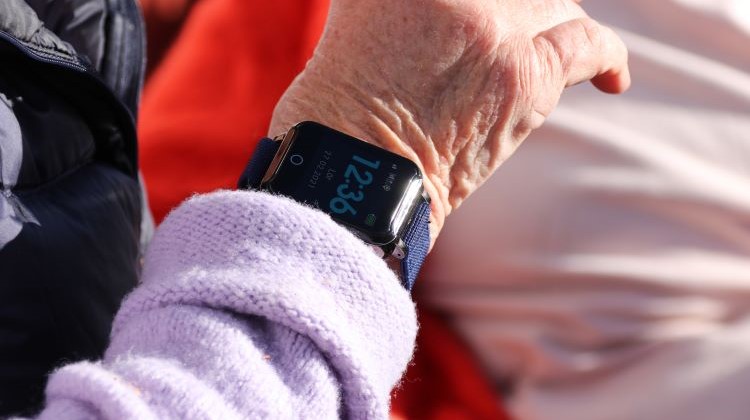Parkinson’s and Eye Symptoms – How Vision Is Affected
When we talk about Parkinson’s disease, the focus is often on motor symptoms like tremors or stiffness. But many people also experience changes in their vision. These symptoms are common – yet often overlooked – and they can greatly impact everyday life and independence.
In this article, we explore how Parkinson’s can affect the eyes, what symptoms to look for, how these are connected to dementia, and what can be done to ease the discomfort.
How Does Parkinson’s Affect Vision?
Parkinson’s impacts the nervous system, including the nerves and muscles that control eye movement. This means the disease can affect how the eyes function and how the brain processes what we see (1).
Common Eye Symptoms in Parkinson’s
According to clinical research and patient reports (2), common visual symptoms include:
-
Dry eyes – due to reduced blinking, causing stinging, blurred vision or a gritty sensation
-
Double vision (diplopia) – especially when tired or switching focus
-
Difficulty focusing – trouble adjusting between near and far vision
-
Slower eye movements – which can make reading and following motion harder
-
Impaired contrast sensitivity – making it hard to see in low light
-
Light sensitivity (photophobia) – discomfort in bright or fluctuating light
These symptoms may vary in intensity but can significantly affect daily routines such as reading, walking, or driving.
Vision and Parkinson’s Dementia
As Parkinson’s progresses, some individuals develop Parkinson’s disease dementia – a condition that brings cognitive changes, including altered visual processing (3).
Visual issues in Parkinson’s dementia may include:
-
Visual misperceptions – misjudging spaces or objects
-
Hallucinations – seeing things that aren’t there (very common in Parkinson’s dementia)
-
Face and object recognition issues
-
Difficulty following motion – especially in busy or fast-moving environments
These symptoms don’t arise from the eyes themselves but from changes in how the brain interprets visual input.
What Can Be Done?
Several strategies can help manage vision-related symptoms in Parkinson’s, including:
-
Artificial tears – for dry eyes (preferably preservative-free)
-
Prism glasses – to manage double vision
-
Better lighting and high-contrast environments
-
Reading aids – such as large print or magnifiers
-
Clear daily routines and calm environments – especially for those with dementia-related hallucinations
-
Regular eye exams – to rule out age-related conditions like cataracts or macular degeneration
When to Seek Help
If vision changes suddenly or hallucinations become distressing, consult both your neurologist and an ophthalmologist. These symptoms may indicate cognitive decline or side effects of medication (4).
Vision problems in Parkinson’s should not be dismissed – they’re often treatable and may be a signal of other changes in the brain.
When your vision changes, your whole world changes – but support is available.
Visual symptoms are common in Parkinson’s disease and Parkinson’s dementia. With the right care and adjustments, they can often be managed effectively. And as with all aspects of Parkinson’s and dementia care, understanding and individualized support make the biggest difference.
Sensorem’s safety alarm has GPS positioning, medication reminders and automatic fall alarm
Sensorem’s personal alarm is an example of a technical aid specially developed for people with dementia. The personal alarm works outdoors and has built-in GPS positioning so that relatives can see the user’s position on a map in the Sensorem app. Relatives are automatically called by the personal alarm (two-way communication) if the user leaves a predetermined geographical area. The personal alarm also has medication reminders, which means that the watch emits a sound and tells the user that it is time to take their medication. The personal alarm can also alert automatically in the event of a fall with the built-in fall sensor.
READ ABOUT HOW SENSOREMS PERSONAL ALARM CAN HELP WITH DEMENTIA
References:
-
Armstrong RA. Visual symptoms in Parkinson’s disease. Parkinsonism Relat Disord. 2011.
-
Parkinson’s Foundation. Vision Problems.
-
Aarsland D et al. Cognitive impairment in Parkinson’s disease: recognition and treatment. Pract Neurol. 2010.
-
Voss TS et al. Visual hallucinations and visuospatial deficits in Parkinson’s disease and dementia with Lewy bodies. Neuropsychologia. 2018.

